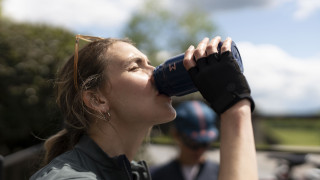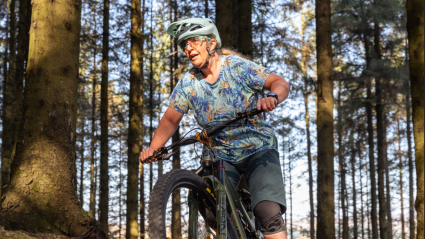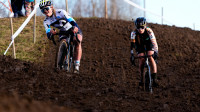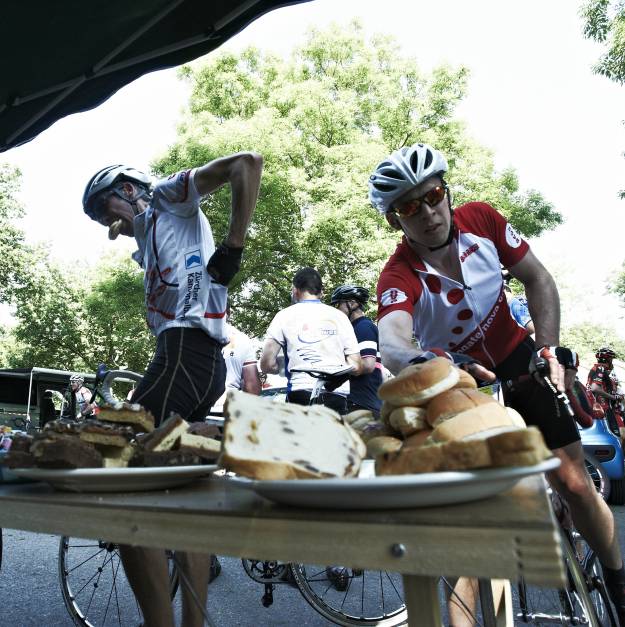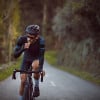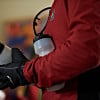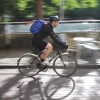Knowledge Level: Beginner
Whether it is a gruelling sportive or a long training ride, optimal nutrition, along with consistent training and realistic pacing, is one of the key requisites for success. Get it wrong, too little or too much, and you may come to a halt, reduce training benefits and significantly increase the time you will need to recover from the ride.
Fortunately, Healthspan Elite, the Official Sports Nutrition Partner and Official Vitamin and Supplement Partner to the Great Britain Cycling Team and British Cycling, is here with some advice.
Day before
Eat normally the day before a big ride but pay particular attention to hydration. You want to make sure you are optimally hydrated in the 24 hours leading up to a ride rather than having to try and play catch-up in the morning which will tend to result in more toilet stops than is necessary. If you are travelling to a sportive the day before, don’t rely on service station food. Pack a healthy wholemeal bread sandwich, some fruit and unsalted nuts as a mid-afternoon snack. Check ahead and make a booking for your evening meal at a suitable restaurant nearby, and ensure that your hotel is able to do an early breakfast.
1900
The evening before a sportive or long training ride, avoid eating too late, or it might impact on the quality of your sleep. There is no need for the vast plates of pasta commonly consumed for the outdated concept of “carb loading”.
Your body can only store a certain amount of energy in the form of glycogen and, a combination of your normal diet and a taper or rest day, will mean that it is more than likely already full. Avoid heavy and hard to digest red meat, but instead opt for lighter proteins such as chicken or fish. Don’t overdo the fibre and steer clear of highly spiced food. Some carbohydrates, in the form of pasta, rice or potatoes are great, but remember you don’t need to overload.
A sour cherry product can help with sleep.
Ride day: 0700
Aim to have your breakfast 90-120 minutes before you start riding. If you know that the ride will start at a very easy pace and does not have a significant climb early on, you can push this to 60 minutes. Porridge is the perfect pre-ride breakfast but, for longer rides, an additional 2-3 egg omelette will give you some more slow release energy. Many cyclists can’t function without coffee, but ensure you keep hydrated and sip at 500 ml of water or isotonic sports drink in the time leading up to your ride.

0900
Pacing and fuelling are intrinsically linked. If you ride too hard, your body won’t be able to absorb and use the fuel you are giving it. Settle into an intensity early on, that you know is sustainable and realistic. Sip at your bottle right from the start of the ride.
You should be aiming to consume 500-1000 ml of fluid per hour depending on your build and conditions. If you tend to forget to drink, which many riders do, especially in cold conditions, set an alarm to go off every 5 minutes as a reminder.
0920-0930
Carbohydrates need to be consumed early, in small amounts and frequently. Thirty minutes into a ride might seem too early but you are not eating for that moment, but for 15-30 kilometres down the road. You will need 0.5-1g of carbohydrates per kg of bodyweight each hour depending on intensity, and you should aim to spread that over 2-3 micro feeds every 20-30 minutes.
500 ml of typical carbohydrate sports drink mixed at 6% will give you around 36 g of carbohydrate, as well as essential electrolytes, so, on top of this, a 80-90 kg rider might also consume some of the options below depending how long they are riding for:
- Two gels (22 g of carbohydrates each) = 44 g
- Five fig rolls (12 g of carbohydrates each) = 60 g
- Three mini pitta breads with peanut butter (18 g of carbohydrates each) = 54 g
- Two brioche rolls with jam (28 g of carbohydrates each) = 56 g
So, it is not too hard to take on enough, but also fairly easy to overdo it. We are all individuals and while some riders thrive on gels alone, others need some form of real food. It is essential to experiment in training with what and how much food works for you. It can be a good strategy to eat more real food earlier on in a ride and then switch to gels later on, when you might not be able to stomach real food or when the pace goes up.
Your body will struggle to process more than this and, trying to force too much down, will result in you feeling bloated and maybe suffering from gastric distress. Pacing and fuelling are intrinsically linked and, if you are pushing too hard, you won’t be able to digest your food. There are however a number of steps you can take to avoid stomach problems on the bike.
On training rides, if you are trying to lose weight, you will want to stick towards the lower end of this scale but you will have to pay close attention to pacing as you will be more reliant of your fat stores for energy and your body can only access these at relatively low intensities.
1000
You will be taking your second or third micro feeds and getting to the end of your first bottle. Keep drinking consistently and have an item of food every 20-30 minutes. Energy gels provide quick-release calories that easily store in your jersey pockets: useful if you know you have a big climb coming up.
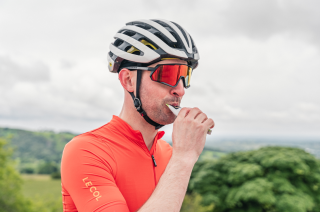
1100
At some point in your training ride you might have a café stop or, if you are on a sportive, come to a feed station. Both of these situations and any food you consume need to be factored into your fuelling strategy. If you know you are coming to a feed station or café, try to not eat within 20-30 minutes of it. If at the feed station, for example, you have a large flapjack, that will be about 40 g of carbohydrates as well as a decent dose of slower burning fat. That isn't a bad thing, you will burn off the fuel, but it has to be accounted for.
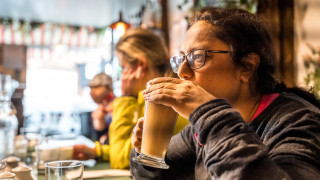
1200
If you know that your ride is likely to be five hours or more, you should take on about 20g protein at about this halfway point. This will help you to avoid feeling empty later on in the ride and will also facilitate your post-ride recovery.
Rest of the ride
Stick to the same structure and discipline throughout the ride. A common mistake is for riders to lose focus towards the end of a ride and to neglect fuelling. If you hit one of your 20 or 30 minute feeds, even if you think there are only a couple of kilometres to go, take that fuel on.
It isn't unusual for sportive distances not to be 100% accurate and, even if you are just training, a puncture or a mechanical can easily make that final stretch drag on. Some riders like to use caffeinated products to give them a boost near the end of a ride but these should be reserved for the final 60 minutes, when you really need them.
When you finish
If you have fuelled and paced your ride correctly, you should finish the ride feeling hungry but not ravenous. Have a protein drink made up and ready to go in your fridge or kit-bag. This will kick-start your recovery and make sure that while you are sorting out your kit and bike and getting showered and changing, you’re rehydrating and starting to recover.
It will also help to prevent you overeating when you do have some real food, which is likely to be a late lunch. This meal should contain some quality protein and carbohydrates, a tuna sandwich or some rice and chicken would be ideal. If you are able to have your real food straight away, within 20 minutes of finishing your ride, you can skip the protein drink.
Your lunch doesn’t need to be huge and getting out of the, ‘"I’ve ridden so I can eat what I want” mindset is key if you are wanting to drop a few pounds.
During the afternoon
A few hours after you have finished your ride, if you didn’t fuel correctly during it or soon enough after, you can suddenly feel really hungry. Take note of this and tweak your during and post race fuelling next time, as this is when it is all too easy to polish off whole packs of biscuits or massive slices of cake. You should have a snack but opt for some unsalted nuts, seeds and some fruit.
Like these chocolate and almond protein balls
Evening
Again don’t use the fact that you have ridden as an excuse for a blow out, unless you are celebrating finishing your main event for the year. A sensible sized dinner containing foods that will aid recovery and reduce inflammation is the intention, rather than trying to replace all the calories you burned. Some oily fish such as mackerel, with broccoli and spiced potatoes, followed by some berries would be perfect.
View and download recipe cards
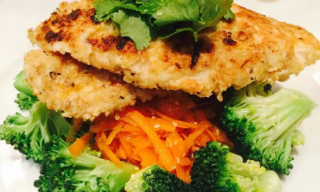
If you’ve got another big ride or a tough workout the next day, some additional slow release protein that’ll be drip fed into your system while you sleep can further aid recovery and leave you in better shape in the morning.

